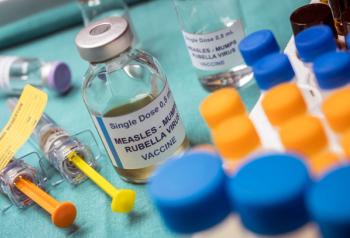
AI Directs Catheters to Target to Treat A-Fib
The algorithm could improve the success of patient-specific A-fib before the disease progresses.
An artificial intelligence (AI) algorithm can locate patient-specific ablation targets within the atria that does not require specialized catheters or 3D electro-anatomic maps of the heart, according to
The algorithm had a success rate greater than 95% within an average of 7.5 placements of the catheter using human atrial fibrillation (A-fib) simulations. This means that after placing the initial catheter, it took that many movements until the algorithm located the source of disturbance in the atria.
The iterative catheter navigation algorithm “could significantly improve the success of patient-specific (A-fib) ablation and facilitate treating patients before the disease progresses to the permanent stage,”
Senior author Behnaz Ghoraani, Ph.D., assistant professor in the computer and electrical engineering and computer science department at Florida Atlantic University, and her research team also tested the effectiveness of the iterative catheter navigation algorithm in the presence of fibrosis and patchy myocardial scars with a 99% detection rate using A-fib simulations.
The algorithm iteratively navigated a catheter toward A-fib sources, did not involve electrophysiological mapping of the entire surface of the heart and did not make assumptions on the A-fib source types to navigate the catheter.
Ghoraani told Inside Digital Health™ that the approach is flexible in terms of what type of source exists in specific patients. She said that the algorithm detects a variety of sources that the disturbance can be.
The algorithm can locate rotational circuits and focal beats.
“Using the same catheters, we looked at signals and used patterns to tell us which direction to move the catheter and where the source of the disturbance is,” Ghoraani said.
Ghoraani and researchers from the Rochester Institute of Technology, the University of Rochester Medical Center and the State University of New York Upstate Medical Center tested the algorithm on “realistic simulated data” with test cases of rotor and foci-driven arrhythmias. The cases covered a broad range of activation patterns in 2D and 3D A-fib simulations.
The researchers placed the catheter on nearly 115,000 initial locations across the simulated region for different rotor and foci mechanisms.
While the team tested the algorithm on simulations, Ghoraani said that it has shown feasibility in a few human clinical cases.
She said that the algorithm makes treatment more individualized and can improve the success rate.
Current approaches are not having long-term success, Ghoraani said, with success rates between 40 and 60%.
Ghoraani’s algorithm is specific to the patient based on signals seen inside their heart, not just their anatomy.
Get the best
Related






















































































